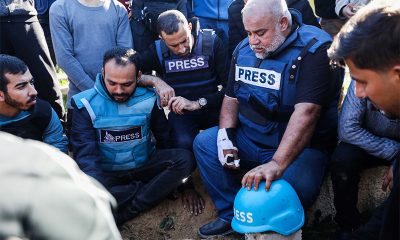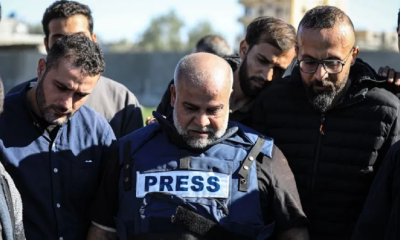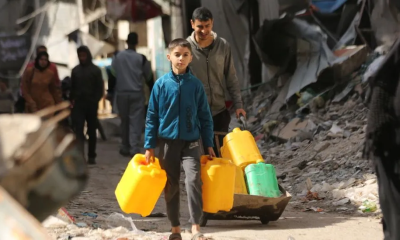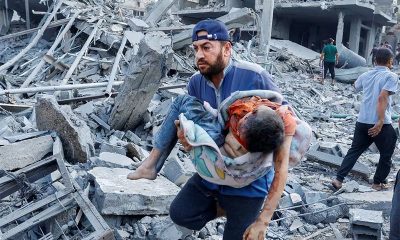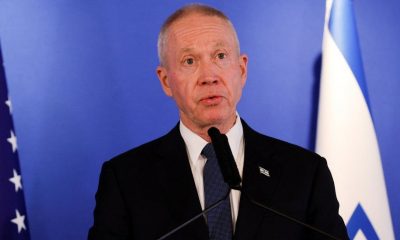Midweek Review
His Story, at a Glance
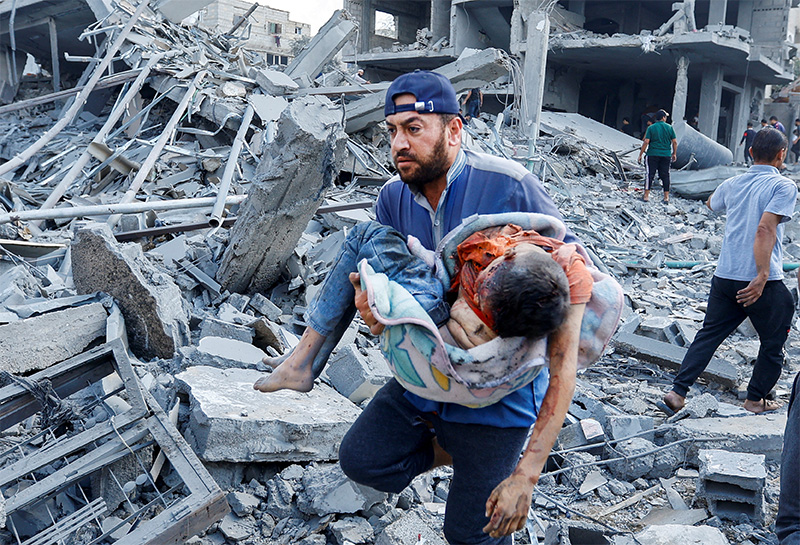
By Lynn Ockersz
He was called to the Light,
But He chose the Darkness,
Sacredness beckoned Him,
But He chose profanity,
He was created for nobility,
But to vulgarity ‘Yes’ says He,
He was earmarked for Love,
But to hatred he easily leans,
Thus, has the ‘Chosen One’,
Lost His way on the ruined earth,
A total stranger unto Himself.
Midweek Review
General election:The Northern vote
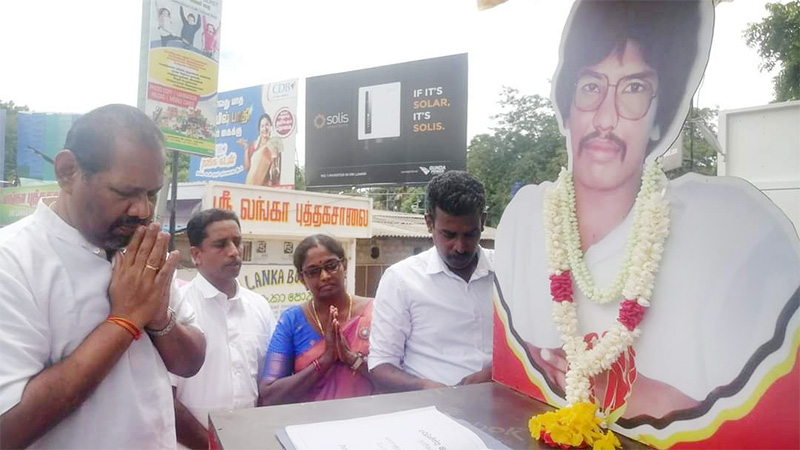
The northern vote should be examined against the backdrop of expulsion of the entire Muslim population from that province in Oct. 1990. The LTTE expelled approximately 20,000 Muslim families from the administrative districts of Jaffna, Kilinochchi, Mannar, Mullaitivu and Vavuniya with literally only the clothes on their backs. They consisted of as many as 75,000 to 100,000 persons. Over the years, some have returned to their villages but the failure on the part of Tamil political groups to condemn the LTTE’s strategy caused irreparable damage to the relations between the Tamils and Muslims. Removal of the Muslim community at gunpoint received unprecedented international attention when a far-right extremist Anders Behring Breivik who killed 77 people, mostly children in two separate attacks on Norwegian soil, in 2011, made reference to the LTTE’s action. One of those who escaped the massacre ended up in the Norwegian Parliament.
By Shamindra Ferdinando
The National People’s Power (NPP) is in the fray in the Northern and Eastern Provinces at the forthcoming parliamentary elections.
The ruling party, on its own, is contesting all five electoral districts in the war-torn region, namely Jaffna and Vanni in the North and Trincomalee, Batticaloa and Digamadulla in the East.
The NPP is confident that the Northern and Eastern electorates are likely to be influenced by Anura Kumara Dissanayake’s (AKD) victory at the Sept. 21 Presidential Election though he couldn’t secure 50% plus one vote. AKD managed to garner 5,634,915 votes (42.31 %) and was well short of the required percentage.
Former President Ranil Wickremesinghe recently declared that both he and AKD lacked a majority in an obvious bid to devalue the NPP leader’s victory. AKD is also the leader of the Janatha Vimukthi Peremuna (JVP). Therefore, AKD is the leader of two registered political parties. Regardless of such attacks, the NPP has sought to increase its share of the votes in the N&E in a bid to enhance its national tally, thereby aiming at the highest number of National List slots. The Parliament consists of 196 elected and 29 appointed members.
Having staged two abortive violent insurgencies to grab power through extra-parliamentary means in 1971 and 1987-1990, the JVP entered the political mainstream and worked with the SLFP and later with the UNP before the formation of NPP in 2019 to contest the presidential election that year. AKD, having led it in its inaugural national election emerged as a distant third securing just 418,553 votes (3.16%).
Among the NPP contestants in the N&E are only two recognised politicians. They are Marungan Mohan and L.P.G. Wasantha Piyathissa on its Jaffna and Digamadulla lists, respectively. The five lists do not include at least one former parliamentarian, Provincial Councillor or Local Government member as per information provided by the NPP in its website regarding the contestants.
The Election Commission received a total of 690 nomination lists from political parties and independent groups. Seventy four lists, however, were rejected for not meeting the required criteria.
As the party in power, the NPP has an opportunity to influence the voters of a particular district. The re-opening, recently, of the 1.6 km long Palali-Atchuvely road that had been closed for 15 years, after the conclusion of the war, on a directive given by President AKD, may boost the NPP’s image. Sri Lanka brought the war to a successful conclusion in May 2009.
The Palali-Atchuvely road remained closed, though many roads, once located within the Jaffna High Security Zones, were re-opened. The Atchuvely-Point Pedro main road, running via Thondamanaru, which had been closed for nearly 28 years, was reopened to the public by the then Minister of Economic Development Basil Rajapaksa in 2011. The re-opening of the 4.5 km long road reduced the travelling distance by about 10 km.
Some have found fault with President AKD for re-opening of the Palali-Atchuvely road, asserting the move posed a threat to the Security Forces Headquarters, in Jaffna. As alleged the Palali-Actchuveli road, however, does not go through the Headquarters. Since the end of the war, successive governments had scaled-down the deployment there, once home to three Infantry Divisions, including the 53 aka the Reserve Strike Force.
In the run-up to the presidential election, AKD caused controversy when he declared, in Jaffna, that the South had decided to vote for a change and the North, too, should follow suit or face the consequences. AKD questioned what the attitude of the South would be if the North went against the wishes of the South.
AKD’s Jaffna declaration was quite rightly interpreted as a veiled threat directed at the North. Many condemned AKD’s statement. Among those who censured AKD was then President Wickremesinghe.
Since AKD’s triumph at the presidential election, the N&E electorate may have undergone a significant change, though the NPP may find it extremely difficult to secure sufficient support required to obtain at least one seat in the North. There had been only one instance of a national political party winning a seat in the North in the post-war period. Angajan Ramanathan entered Parliament on the SLFP ticket at the 2020 general election. But, now he is contesting Jaffna again on the Democratic National Alliance (DNA), under the postbox symbol, once led by ex-war-winning Army Commander General Sarath Fonseka. That was in 2010 though the symbol had been different then.
ITAK on its own
Illankai Thamil Arasu Kadchi (ITAK), aka the Federal Party (FP), is in the fray on its own at the forthcoming general election. With the demise of political veteran Rajavarothiam Sampanthan, 91, in late June this year, the ITAK-led Tamil National Alliance (TNA), formed during Chandrika Bandaranaike Kumaratunga’s presidency at the behest of the Liberation Tigers of Tamil Eelam (LTTE), faced an uncertain future. In fact, the TNA has been in decline since the eradication of the LTTE and never recovered from losing its major sponsor in 2009.
At the 2004 general election, ITAK fully backed by the LTTE won 22 seats, including two National List slots, while the Tamil United Liberation Front (TULF) that had 15 seats in the previous Parliament, simply disappeared from the scene. The Eelam People’s Democratic Party (EPDP) that won two seats at the previous general election, conducted in 2001, was reduced to one seat. It would be pertinent to mention that under the ITAK’s leadership the EPRLF, TELO and PLOTE, three former left leaning terrorist groups, too, contested under the ITAK’s ‘House’ symbol. The Parliament recognized the ITAK whereas the grouping was widely identified as the Tamil National Alliance (TNA).
At the 2001 general election, in addition to the TULF’s tally of 15 seats, including one NL seat, the EPDP and the Democratic People’s Liberation Front (DPLF/political front of the PLOTE, one of the terrorist groups sponsored by India), secured two and one seat, respectively.
The LTTE-TNA combine, in 2005, made a fundamental mistake of facilitating Mahinda Rajapaksa’s victory at the 2005 presidential poll by ordering Tamil voters to boycott the election, thereby engineered Ranil Wickremesinghe’s defeat. The end result was the annihilation of the LTTE by May 2009. Just two weeks after Mahinda Rajapaksa’s victory, the LTTE resumed claymore mine attacks followed by the Mavil-aru incident. Finally, an all-out war broke out in the second week of August with massive LTTE attacks on the Jaffna frontlines. The armed forces decimated the LTTE within three years. That freed the TNA to engage in politics free of LTTE dictates. The people have conveniently forgotten the circumstances the TNA had to recognize the LTTE as the sole representative of the Tamil speaking people. That should be examined taking into consideration how the LTTE assassinated the people’s representatives, including ITAK/TULF Leader Appapillai Amirthalingam in July 1989 in Colombo.
The ITAK suffered quite a setback at the 2010 general election, the first since the eradication of its patron. The TNA’s tally of 22 seats at the 2004 general election was reduced to 14 seats, including one NL slot. No other Tamil party was represented in that Parliament.
At the 2015 general election, the ITAK increased its tally to 16, including two NL slots while the EPDP secured one seat.
During the 2015-2020 period, the ITAK has been beset by internal strife with lawmakers pulling in different directions. The party deteriorated over the 2015-2020 period. It couldn’t at least reach a consensus on the accountability issue. In fact, the party couldn’t have raised the issue after having voted for war-winning Army Commander Gen. Sarath Fonseka. Despite war crimes allegations, the N&E overwhelmingly voted for Fonseka thereby contradicting the ITAK’s accusations.
There had never been a proper assessment of the TNA joining a UNP-led coalition, that included the JVP, in backing retired General Sarath Fonseka at the 2010 presidential election. The TNA ensured Fonseka’s victory in the N&E though Mahinda Rajapaksa routed the war winning Army Chief in the South. Fonseka lost by a margin of 1.8 mn votes, despite garnering a majority of minority votes.
At the 2020 general election, the number of Tamil political parties represented in Parliament increased to five from two at the previous election while the ITAK was reduced to 10 seats, its worst performance since its superlative victory in 2004.
The ITAK secured the third position in the 2020 Parliament by winning 10 seats, including one NL slot, while four other parties, namely the EPDP (02), Ahila Illankai Thamil Congress (AITC 02), Thamil Makkal Viduthalai Pulikal (TMVP 01) and Thamil Makkal Thesiya Kuttani (TMTK 01) shared six seats among them.
In the run-up to this year’s presidential election, the TNA suffered another setback when a section of the parliamentary group declared its support for Tamil common candidate Pakkiyaselvam Ariyanenthiran, who had served as a TNA MP during the 2004-2015 period. The TNA backed Sajith Premadasa’s candidature at the presidential poll. M.A. Sumanthiran, PC, who is on ITAK’s Jaffna list, has been accused of maneuvering the party to back Premadasa at the presidential, a charge denied by the top lawyer.
During a recent interview with the writer ITAK Batticaloa District contestant and ex-MP Shanakiyan Rajaputhiran Rasamanickam, having explained the circumstances ex-militant groups quit the grouping, emphasized the they could easily retain 10 seats as in the last Parliament but aimed for 13 seats ( https://island.lk/itak-sans-eprlf-telo-and-plote-confident-of-securing-majority-of-seats-in-ne/)
ITAK vs DTNA
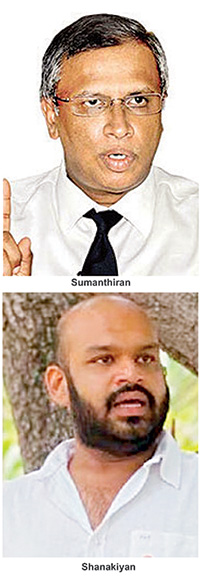 Those who quit the ITAK-led alliance have fielded candidates on the Democratic Tamil National Alliance (DTNA/’conch’ symbol) ticket. The DTNA that hadn’t been represented in Parliament since its formation way back in late’80s is expected to pose a challenge to the ITAK and other political parties in the fray, even though ITAK has literally dismissed any threat from them, perhaps due to the conservative nature of the Northern voter in general.S.J.V. Chelvanayagam’s grandson Elango Chandrashan is contesting Jaffna on the ITAK ticket. G. G. Ponnambalam’s grandson Ganjrendrakumar Ponnambalam, former parliamentarian, is on the Jaffna list of TNPF (‘Cycle’ symbol). Shashikala, wife of assassinated ITAK MP Nadarajah Raviraj, is also contesting Jaffna on the DTNA ticket. The Mahinda Rajapaksa government has been widely blamed for the early Nov. 2006 Raviraj’s assassination in Colombo.
Those who quit the ITAK-led alliance have fielded candidates on the Democratic Tamil National Alliance (DTNA/’conch’ symbol) ticket. The DTNA that hadn’t been represented in Parliament since its formation way back in late’80s is expected to pose a challenge to the ITAK and other political parties in the fray, even though ITAK has literally dismissed any threat from them, perhaps due to the conservative nature of the Northern voter in general.S.J.V. Chelvanayagam’s grandson Elango Chandrashan is contesting Jaffna on the ITAK ticket. G. G. Ponnambalam’s grandson Ganjrendrakumar Ponnambalam, former parliamentarian, is on the Jaffna list of TNPF (‘Cycle’ symbol). Shashikala, wife of assassinated ITAK MP Nadarajah Raviraj, is also contesting Jaffna on the DTNA ticket. The Mahinda Rajapaksa government has been widely blamed for the early Nov. 2006 Raviraj’s assassination in Colombo.
Regardless of the breakup of the TNA alliance that contested elections under the ITAK symbol, all political parties in the fray, without exception, are careful not to disapprove of the LTTE. Among the contestants are two prominent ex-LTTE personnel, who later rebelled against it and survived, including Vinayagamoorthy Muralitharan alias Karuna Amman, perhaps one of the most capable battlefield commanders produced by the group during the conflict.
Karuna and his estranged one-time sidekick Sivanesathurai Chandrakanthan aka Pilleyan are contesting Batticaloa from different parties. Pilleyan, one-time Chief Minister of the eastern Province and suspect in MP Joseph Pararajasingham’s Christmas Day murder leads the TMVP Batticaloa district list, while Karuna, who had represented the UPFA in Parliament, is contesting on the National Democratic Front (NDF) ticket under the ‘Car’ symbol.
The Island sought clarification from DTNA NL member Kanthar Nallathamby Srikantha regarding the DTNA and TNA submitting a joint nominations list for the Trincomalee district. Lawyer Srikantha, who had served Parliament during 2006-2010 period,as a representative of ITAK, explained that they wanted to ensure election of an MP from that district. Various interested parties, including the Catholic clergy, had intervened to facilitate an understanding between the two groups. The late R. Sampathan, who had no option but to serve the LTTE’s interests, represented Trincomalee district in the last Parliament.
The issue at hand is whether Tamil political parties, altogether, can secure at least 16 seats in the N&E as they did at the last parliamentary election. Perhaps, the ITAK may perform better sans nominees of former terrorist groups. They grew weary of violent politics, gave up Eelam and entered the political mainstream in the ’80s following the signing of the Indo-Lanka accord in July 1987.
The PLOTE caused an international furor when it carried out an amphibious assault on the Maldives in early Nov. 1988 in a bid to remove the then President Maumoon Abdul Gayoom from power. That action earned the PLOTE instant notoriety even though neither India nor Sri Lanka took any specific action against the group though those that raided the Maldives were either captured or killed.
The overall deterioration cannot be examined without taking into consideration the second presidential election conducted in Dec. 1988 and parliamentary election in Feb. 1989 in the then temporarily merged NE province, under IPKF supervision, and the first Provincial Council rigged by the IPKF for the benefit of the EPRLF during that period. There has never been a proper assessment of Indian intervention here from the inception of the conflict that caused all types of upheaval here in addition to fueling a full blown conflict, especially in the local political setup. The formation of a special militia, called ‘Tamil National Army’ before the Indian withdrawal, sent shock waves through Sri Lanka at that time, the Premadasa government obsessed with Indian interference provided its tacit support to the LTTE to eradicate the TNA.
Did PLOTE leader Uma Maheswaran die in a hail of bullets at the top of Frankfurt Place, Bambalapitiya, a few months after the raid on the Maldives over his direct role in the operation?
The contest between the TNA and DTNA may cause a drop in support in terms of voters for the former but the real fear among established Tamil politicians is that NPP triumph at the presidential election may influence at least to a certain extent the Tamil speaking electorate not only in the N&E but upcountry region as well.
The NPP is under fire for repeatedly calling for the annihilation of established political parties to pave the way for its members to dominate the Parliament. President AKD doesn’t mince his words when he repeatedly emphasized the responsibility on the part of the electorate to clear Parliament of other political parties.
However, President AKD has signalled his readiness to work with elected representatives of Tamil political parties. Among those who had already met the President are Douglas Devananada of the EPDP and former MP S. Sritharan of the ITAK though the status of the negotiations between the government and Tamil political parties remain unclear. Devananda has already publicly announced his backing for the NPP.
Former Minister and Pivithuru Hela Urumaya (PHU) leader Udaya Gammanpila, contesting the Gampaha district on Sarvajana Balaya ticket, has claimed a secret understanding between the ITAK and the NPP.
Voters are unlikely to be swayed by the Attorney-at-Law’s declaration that the NPP promised a federal structure in the N&E, resume war crimes investigations under the leadership of SSP Shani Abeysekera and Senior DIG Ravi Seneviratne, both recalled by the NPP government, and finally appoint M. A. Sumanthiran, PC, as the Foreign Affairs Minister under the proposed new government. The claim that the government needed Abeysekera and Seneviratne to resume war crimes investigations in terms of the accountability resolution adopted at UNHRC in 2015 is baseless. Sumanthiran, however, during a press conference in Jaffna declared the ITAK should consider if the party received an offer from the NPP to accept ministerial portfolios.
In spite of Gotabaya Rajapaksa government’s declaration in 2020 that Sri Lanka quit the Geneva-led accountability process the actual situation is quite the opposite. That process continued over the years without hindrance and now has reached a crucial juncture.
The NPP’s recent declaration that it didn’t accept Geneva intervention is irrelevant. Sri Lanka cannot side-step the accountability process by refusing to accept Geneva interventions. The lies and exaggerations have to be countered and the record set straight. The NPP government cannot under any circumstances absolve its responsibility to defend the war-winning armed forces in Geneva. Unfortunately, that issue seems to be discarded by treacherous national political parties. Let me appreciate the services rendered by patriotic groups, particularly the Global Sri Lanka Forum (GSLF) to highlight and emphasise the responsibility on the part of the government whoever is in power to defend our armed forces.
IF UNHCR continues to insist on a pound of flesh from Sri Lanka’s then leaders and the military for the most unlikely war victory in 2009 against the LTTE, dubbed by the FBI as the world’s deadliest terrorist group, going against the contrary predictions of all the so-called pundits essentially hired by the West, it will be the UN that will be on trial before the whole world for staging such selective and one-sided justice, after literally turning a blind eye to all the unimaginable atrocities that are continuing to be committed against the Palestinians. UNHCR Chief Austrian Volker Türk what about dropping 2000 pound bombs on hapless civilians taking shelter even in designated safe zones, literally cutting off all their food supplies, destroying whatever meagre water sources.
Midweek Review
Increasing scholarly mutuality for a holistic understanding of life: Some initial reflections
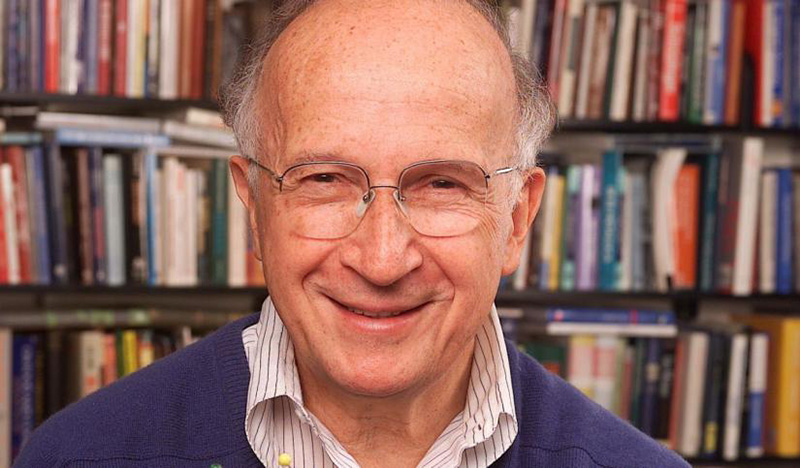
by Liyanage Amarakeerthi
Professor of Sinhala, University of Peradeniya
(Keynote speech delivered at the International Multidisciplinary Research Conference at University of Kelaniya, October 25th, 2024.)
We know that in Sri Lanka, students are separated into specialised subject areas a bit too early. This early specialisation continues even at universities. Now, some students are admitted to universities directly by the University Grant Commission and they are not allowed to segue into any other stream of learning. In some cases, they cannot even take classes in another subject. In addition, there are departments in our faculties looking to seize the first opportunity to break away and establish their own faculties, isolating themselves further in their own expertise.
This practice may have its own reasons and benefits but in terms of generating interdisciplinary understanding of life, society, and the world young students must be allowed to find their way after encountering a host of diverse subjects. While academia in some other parts of the world is seeking ways to find meaningful interactions and integrations, we seek the unchallenged comforts of isolation. In other words, we value monologue over dialogue.
But some of us are already engaged in dialogues with other fields. I have been a proponent of a holistic approach to education for quite some time now. I have made a case for this in four of my books, Vishavavidyaa Yanu Kumakda? Kalawa saha Minisa, Kalawa Kumakatada?, and Sithiwili Sithijya.
In this speech, I want to argue that there needs to be much more substantial interconnections between different branches of knowledge. Let me begin by referring to something close to my heart: storytelling. A certain neurological study has shown that ‘when we get to the end of a story, a short lyric poem, or a joke, the brain performs an instantaneous retro-assessment for efficiency. If, as I tell the one about the duck who walks into a bar, I interject a fifteen-minute digression about the duck’s childhood that turns out to have nothing to do with the punchline, your brain notes this as an inefficiency and, at the end, you laugh less.’ This is a wonderful example from George Saunders’s excellent book about how fictional narratives are constructed and read. (A Swim in a Pond in the Rain 83-4). Numerous recent studies have focused on the workings of the human brain, biochemistry, and neurological systems when we create and enjoy narrative arts. In other words, natural sciences have paid some significant attention to human activities that are typically studied in the humanities, and that intellectual effort has led to some spectacular discoveries. For example, neurobiologists have discovered the left side of the human face is stronger in expressing feelings, and it has to do with the way the human brain controls facial muscles. Much before this scientific discovery was made, European painters used the left side of human faces to depict feelings central to their paintings, especially portraits (Jerome Kagen. The Three Cultures. 246). There are numerous other instances of this kind where the paths of natural sciences and arts have crossed. And then, Kagen’s MIT colleague, Steven Pinker, who is also at Harvard University now, points out in his groundbreaking book, The Language Instinct (1994), that language and our ability to learn and use language is part of our biological hard wiring rather than a work of culture. There have been numerous studies on language conducted by biologists.
A Poet winning a Nobel Prize for chemistry
Yet our education system in Sri Lanka hardly encourages scholars to move beyond the confines of narrow specialties even at the level of postgraduate studies. For example, we never had scholars like Erwin Schrödinger, a physicist, who conducted university lectures on Greek philosophy or anyone like Roald Hoffmann, professor of Humane Letters at Cornell university and Nobel laureate in chemistry, who is also an excellent poet. Hoffmann was unhappy that scientific rationalities reduce “miracle of the living world to a set of cold, hard facts gained by the logic of dissection.” In Sri Lanka, we have very few natural scientists academically interested in the fields related to the humanities. Professors Nalin de Silva and Carlo Fonseka have shown some interest in the field, but their interventions are, on the one hand, not deep enough to have any significant impact either on natural sciences or on the humanities. In addition, they were rather journalistic interventions mostly implicated in the politics of the day. De Silva in his style appears to be a monologist ideologue seeking to dominate rather than a dialogist seeking to have respectful conversations.
The above quotation was taken from Jerome Kagen’s book, The Three Cultures (2012: 223), which is primarily about the intersections among natural sciences, social sciences, and the humanities. For me the Kagen book is a kind of manifesto for us to think about a greater interaction among the three branches of knowledge. Kagen demonstrates that three branches of academic study differ from each other at three levels: ‘primary concerns’, ‘sources of evidence,’ and ‘concepts.’ And he also argues that natural sciences, social sciences, and the humanities differ on six (6) additional dimensions bringing the number of points at which they differ to nine (9). In this short speech, I do not have time to elaborate on all those points. But let me cite the most revealing points: One of the points these fields differ is the ‘the influence of historical conditions’ on what is being studied. In natural sciences, it is minimal, in social sciences it is modest, while in the humanities it is serious (4). For example, in studying why a human being acts the way she does, natural scientific explanation does not consider that the historical condition in which a given human being operates has much relevance. In social science, the impact of historical conditions is moderate while in the humanities it is quite significant. While the naturalist scientific hypothesis about the human behaviour in question can be quite exact and rational, the humanist explanation can be significantly explanatory, and even metaphorical.
19th C Europe seen from three vantage points
Professor Kegan ends his book by claiming that the dominance of a single branch of knowledge is dangerous as much as a government without a stronger opposition runs the risk of becoming despotic. Now, the domination of natural sciences, caused by both very good and bad reasons, has created an imbalance in human discourses. What he suggests is that we develop a culture of enriching mutuality among these streams of knowledge. Collaborations both in and out of the academy, Kegan thinks, can lead to much more holistic inclusion of the insights garnered from all knowledge forms. He cites an undergraduate course Harvard University offers where three scholars co-teach. The title of the course is “Nineteenth-century Europe.” A natural scientist teaches the discoveries of Ludvig Boltzmann, Greger Mendel, and Luis Pasteur. A social scientist explains the socio-cultural settings in which those discoveries have been made. A history professor would contextualise those discoveries in the background of industrialisation of wealthy European democracies (Kegan 2009:266). We can easily imagine how the course might have enriched the students’ understanding of the Europe of that time. It is sad that we do not have a course of this kind in Sri Lankan universities. Maybe it never occurred to us to look at higher education this way. I hope very much that this conference will lead to greater understanding among us. We, natural scientists, social scientists, and the scholars in the humanities, can come together to offer a course on the nineteenth century Colombo.
Much before Kagan wrote his book, the debate on a much more integrated approach to understanding human condition has been taking place. In fact, Kagen’s book itself was inspired by such a book: C.P. Snow’s The Two Cultures (1959) – a book extremely optimistic about natural sciences. And the book is about key differences between natural sciences and the humanities. Like Kagen, another Harvard professor was instrumental in leading the argument for much closer connections among various branches of knowledge. He was Edward O. Wilson, and in On Human Nature, originally published in 1978, and republished numerous times, he pointed out that natural science alone cannot fully explain human nature. Wilson’s contribution to this debate attains its most eloquent expression in Consilience: The Unity of Knowledge. There, Professor Wilson argues that the ‘communal mind of literate societies’, which is ‘world culture’ is an ‘immensely large loom.’ Wilsons states further that,
“Through science it has gained the power to map external reality far beyond the reach of a single mind, and through the arts the means to construct narratives, images, and rhythms immeasurably more diverse than the products of any solitary genius” (Wilson 1998: 13).
For him, natural sciences, social sciences, and the humanities are integral parts of what he calls, ‘the communal mind’, which is our collective understanding of the phenomena around us, and, of course, around us. The intellectual agility and fluidity that allow us to move from one field to another is what Wilson is after in his explanation of consilience. The liberal arts tradition of education in the US, where a wide spectrum of subjects is included in an undergraduate curriculum, Wilson argues, needs to be revitalised. I have been making this argument here in Sri Lanka for many years, Vishava Vdiyalaya Yanu Kumakda is a key manifestation of that argument. Our university system never had holistic liberal arts programmes. Wilson’s consilience argument seems a much richer version of liberal arts vision: “Every college student should be able to answer the following question: What is the relation between science and the humanities, and how is it important for human welfare? (13).”
Deepening mutuality
Biology of ethics Given the time restrictions, let me indicate some insights we can gain from a deeper mutuality between natural sciences and social sciences, and also between natural sciences and the humanities. Robert Sapolsky’s book, Behave: The Biology of Humans at Our Best and Worst (2017) is a captivating demonstration of why we need a much more holistic causality to explain human behaviour. Human feelings, thoughts, and bodily actions have their roots in biochemistry, neurological systems as much as they are caused by sociobiological factors such as upbringing, parental care, peer culture and so on. In short, both biological causes and socio-cultural causes lie behind our actions. Thus, we need a much more integrated approach to understanding human affairs.
Sapolsky’s book is full of scientific details that explain how our neurobiology intersects with ethics, fear, shame, violence, racism and so on. Based on the research and experiments of numerous scientists, Sapolsky explains the workings of ‘amygdala’ located in the frontal cortex of our brain. Neuro-chemical reactions that take place in amygdala are related to feelings like anxiety, fear and aggression, and, even, violence. We in the humanities talk about ethics, sympathy, compassion and so on. We believe that a considerable grounding in ethical rationality, acquired by studying philosophy, and, the imaginative skills, sharpened by studying literature, help students to live an ethical and humane lives. As a scholar in literary studies, I still want to hold on to this belief. But yet, I also believe that rich interactions with natural sciences can help us make our teachings in the humanities much more realistic, less idealist or wishful, and substantial. Those who are in the natural sciences can hopefully benefit by developing meaningful interactions with us in the humanities. Of course, we in the humanities must be prepared and equipped for such interactions.
A revealing example
Let’s look at a revealing example. When we accidentally chew on some rotten food, the amygdala gets chemically activated leading us to throw up that food even when our conscious thought process begins. Conscious thought process is too slow to save us from the danger of swallowing toxic food. The workings of amygdala do not stop there. When we see something morally disgusting too, it gets activated and leads us to act in certain ways. In other words, our brains chemically react to culturally ‘toxic’ phenomena as well. But we must not rush to believe that amygdala is a wonderful organ that guides us only in the right ethical directions. Amygdala does not know ethics. Sapolsky explains further that these reactions of amygdala can be culturally mediated. For example, amygdala’s reaction to disgusting food is an activation of the biological safety network within us to protect us from harm. The same reactions can take place when we see a person who is considered an enemy, an ‘other’, or an outsider within our culture. Otherness is something discursively created and mediated by socio-cultural ideologies. This means, our biology is not entirely free from our culture. In addition, our ethical rationality is not just guided by our rational mind. Even biochemical reactions that begin their workings before any invention of the rational mind can be trained in a certain way by the dominant notions in a culture. Arguably, if in a certain culture no one is considered ‘a disgusting Other,’ our amygdala would not react to them in a way it would react to disgusting things such as rotten food.
As Antonio Damasio (Descartes’ Error 1994) has brilliantly shown, Descartes made an error, and the Cartesian separation of mind and body, i.e. reason and feeling, was a fundamental mistake creating a gap between sciences and the humanities. Luckily, in the recent past numerous scholars have come out from natural sciences attempting to bridge the gap. Once looked unbridgeable, the divide is now bridged with delightful insights appearing from both sides. This conference is a hopeful sign that we in Sri Lanka have begun to see an abyss that separates us from each other. And I am happy to say that this is my third time speaking on topics related to our intellectual.”
Midweek Review
Truth Meets Beauty

By Lynn Ockersz
Here was Nature’s Plenty,
Captured in pulsating paintings,
And stirring photos of the wilds,
By the Young Zoologists of Sri Lanka,
At the august J.D.A. Perera Gallery,
And rarely have we seen before,
A more sublime coming together,
Of Art and Science, Truth and Beauty,
Thanks to the genius of the young,
Steadily pushing the boundaries.
-
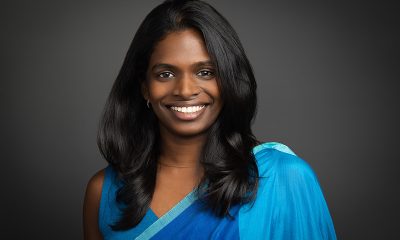
 Business6 days ago
Business6 days agoStandard Chartered appoints Harini Jayaweera as Chief Compliance Officer
-
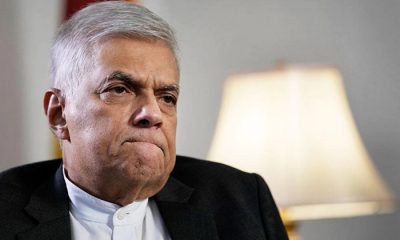
 News7 days ago
News7 days agoWickremesinghe defends former presidents’ privileges
-
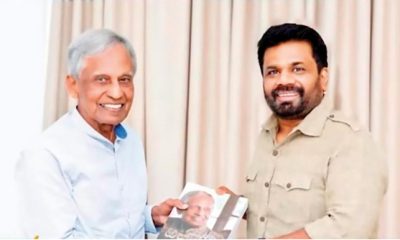
 Opinion7 days ago
Opinion7 days agoDevolution and Comrade Anura
-

 News5 days ago
News5 days agoFifteen heads of Sri Lanka missions overseas urgently recalled
-

 News5 days ago
News5 days agoFive-star hotels stop serving pork products
-
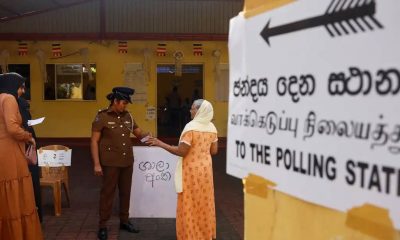
 Features5 days ago
Features5 days agoWaiting for a Democratic Opposition
-
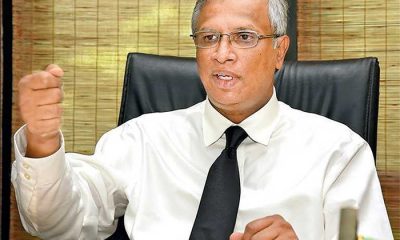
 News4 days ago
News4 days agoITAK denies secret pact with NPP
-
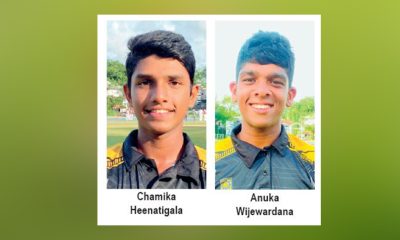
 Sports7 days ago
Sports7 days agoChamika, Anuka shine as Mahanama beat Nalanda


